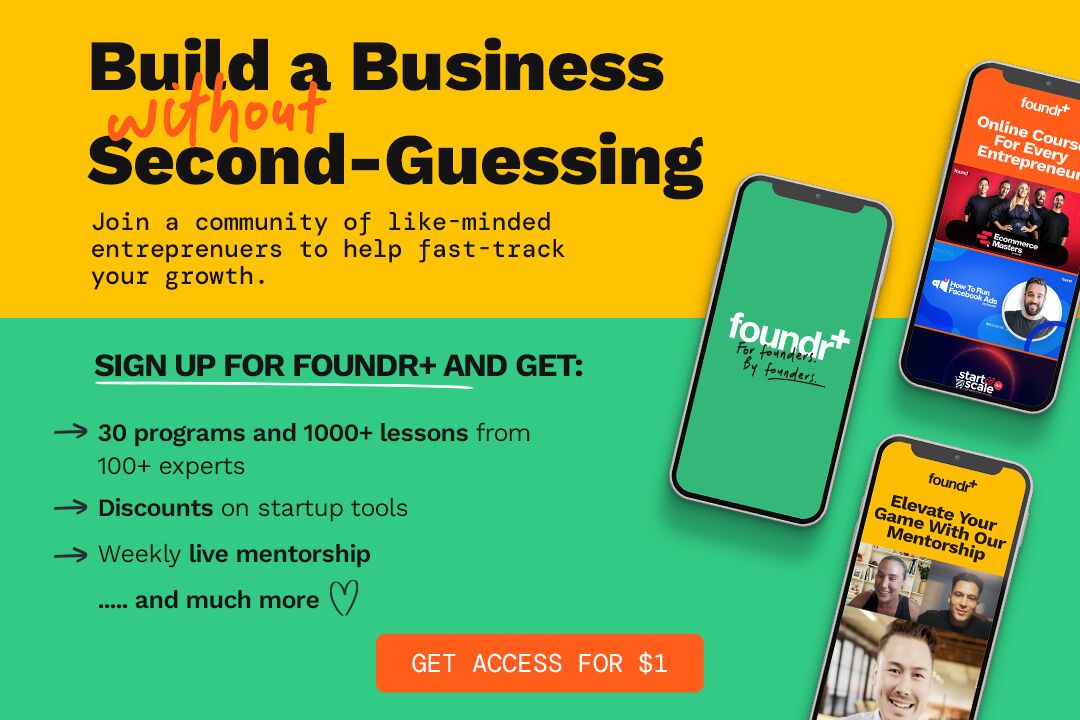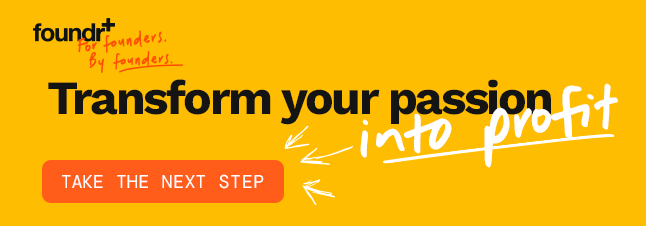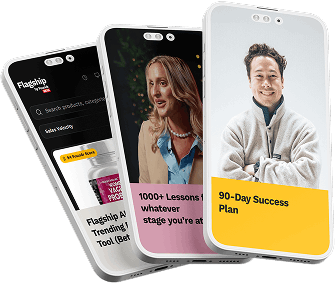Learning how to find clients is likely your business’s biggest time suck. It’s the most essential task, yet it’s one that makes you absolutely no cash. The faster you find clients, the more time you’ll have to actually earn money.
Finding and winning top-notch clients is a skill, and it’s more valuable than any freelancing or consulting talent you possess. Seriously. If you can learn how to get clients, you’ll be better off than the savviest experts in your field.
Why? Just ask McDonald’s or Walmart.
You don’t have to be the best in town. You don’t need the highest quality, fastest speed, or most prolific service—you just need to be the most findable and accessible.
Sure, you want to do good work, too. That’s always going to help. But your priority should be to get clients.
From the get-go, you’ll spend your time finding and winning clients. However, as time goes on, you’ll spend less time finding clients—your customers will eventually come to you. That might sound like a distant dream, but it’s a reality you’re bound for if you follow the tips and techniques in this guide.
Getting quality clients is hard work, whether you have a brand-new consulting startup or an established freelancing business. Yet, once you get into a rhythm and pick up momentum, you’ll start finding new clients with ease.
Below, I’ll show you our favorite tried-and-true ways to get more clients. But first, let’s look at how to get clients you actually want.
How to Get Clients
3. Niche Down (But Not Too Far Down)
4. Write SEO-Optimized Blog Content
5. Guest Blog on Relevant Websites
8. Get Engaged in Facebook and LinkedIn Groups
9. Take Advantage of Job Boards
10. Turn One-Off Clients Into Repeat Customers
11. Follow Up With Past Clients
13. Partner With Similar Businesses
16. Experiment with Freelance Platforms
How to Find Clients You Want
You might want clients for your business, but you don’t want just anyone. The wrong client can waste your time, burn your cash, kill your enthusiasm, and ultimately destroy part of your entrepreneurial soul.
Be picky from the beginning. Only work with respectful clients who make your life better—not worse. When you’re looking for clients, think about why you started your business.
Was it just for money? Did you want to make a difference? Were you looking for a better work-life balance?
Remember your dreams, and ensure the clients you take on help (not hurt) your chances of making them a reality.
Stick to the following tips to find golden clients.
Tips for Finding the Right Clients
- Set Goals: Decide now what kind of clients you want to work with. Define how they act, how they treat you, and how the business relationship works. Will you work with less-than-pleasant clients if they pay a premium? Or will you prioritize your happiness over cash? Don’t wait to make these decisions later—it’ll be harder in the moment.
- Look in the Right Places: Don’t look for gems in the dumpster. Poor clients usually hang out in similar places. You may find that clients on freelancing platforms like Upwork or Freelancer.com tend to show less empathy for your business, while clients referred by friends and colleagues tend to be more respectful. If that’s the case, look for more referrals and spend less time on freelancing platforms. Certain industries may match your personality and consulting experience better—for example, you may work better with the pace of local restaurants rather than fast-action tech startups.
- Price Yourself Appropriately: Price impacts the happiness of both you and your client. Get it right, and you’ll feel fulfilled when completing a job. Get it wrong, and you’ll feel cheated, even if you enjoy the nature of your work. Don’t be willing to settle for more than you think you’re worth.
- Maintain Your Standards: Set rules and expectations upfront. For example, if you decide your work falls into the less urgent category, you may choose to never work after hours or on the weekends—that’s for you to decide. Let your client know that from the get-go, and don’t compromise later if something comes up. Sure, if there’s a bonafide emergency, you may make an exception now and then—but emergencies are rare.
- Go Big or Go Home: Want to win the big clients? Stick your neck out and take a risk. Many will reject you, but some won’t. Fortunately, you don’t need tons of clients—you just need a few really good ones.
Where to Find Clients in 2025
To get more clients, you’ll need to find them first. Depending on their industry and demographic, they could be in very different places.
For example, if your consulting company targets farming businesses, you probably won’t find them using TikTok or Twitch. Instead, you might try word of mouth or local event marketing.
However, if you’re trying to get more clients in the world of digital design, you may want to use platforms like Dribbble and Behance.
Below, I’ll share several techniques and platforms you can use to find and win your dream customers. But not every tip will be the best option for your business.
You’ll need to dig deep to understand more about your clients so that you can invest your time and money in the right places. If you don’t know your client’s favorite chill spot or breakfast cereal yet, that’s OK—just recognize that it’s faster and cheaper to find top-notch clients when you know more about them.
Now that you know what kind of clients you want and where to find them, it’s time to get your hands dirty. Below, I’ll walk you through our favorite methods for getting more clients. I will show you step-by-step processes for building reliable pipelines that’ll continue feeding you valuable work.
Not every tactic is going to be suitable for your business, and that’s OK. You don’t need 15 different methods for finding new clients. Likely, you only need 2 or 3 (maybe 4).
I created this more extensive list to give you options—to help you find the tactics that feel most comfortable and appropriate for your business. Give each of the tactics a try. When you find one that works, invest more of your time and money into it. If it keeps working, don’t worry about trying all the other tactics (yet)—just keep doing what you’re doing.
Don’t Skip: The Complete Guide to Getting Clients for Your Consulting Business
16 Ways to Find More Clients
1. Help Your Clients Find You
Everyone wants passive income, right? Well, passively finding clients is the next best thing. You want to do everything you can to minimize the time and money you spend chasing clients. Build the right online presence and portfolio, and your clients will spend their time finding you instead.
Here are a few ways to help your clients find you first:
Build a Website
A website makes you and your business legit. Your site doesn’t need to be a masterpiece—it just needs to professionally communicate what you do.
Include your website in your bio, email signature, and social media profiles. Drive prospective leads to learn more about your business and to see your portfolio.
Grow Your Portfolio
Remember looking for your first job? If you skipped that part of your career and jumped straight to a business owner, good for you—because it’s a painful start. Entry-level jobs and even internships demand experience, experience you were hoping to gain from said job.
It’s a sad, strange demand.
Like with your first job, it’s hard to grow your portfolio if clients want to see a polished portfolio before they hire you. You may need to get clever to pick up momentum.
Consider doing a project for a friend pro bono. Or think about completing a passion project. For example, if you’re a freelance writer, write a few blog posts about topics you care about or issues in industries you want to work in.
Leverage your education and career to build your portfolio. If you have projects from school or past jobs you can showcase, it’s better than nothing. Also, request recommendations from previous mentors or bosses—their endorsement can help gain a prospective client’s trust.
Once you win your first client, go above and beyond to deliver top-notch work. Feature that work on your portfolio, and let the snowball effect begin.
Get Active on Social Media
Post valuable content on Facebook, Twitter, LinkedIn, and even Instagram. Be active on the platforms your clients use. Complete your profiles on each social network.
Google your name and see what comes up. It’s likely going to be your social profiles and then maybe your website. Keep in mind that this is probably what your client is going to do, too.
Do you like what you see? Does your client find a professional-looking LinkedIn, party-life Instagram, and a political-rage-head Twitter?
Think about the image your profiles portray and make adjustments to appear the way you’d like. You have complete control over these accounts:
- Add professional profile pictures
- Complete your background and summary information
- Link back to your website and portfolio
- Post valuable, relevant content to your industry
- Be polite and professional, but also have fun and show your personality
LinkedIn is where career-making magic happens. This is where you’ll likely spend the bulk of your time developing your professional image and finding clients. Take time to complete your profile, add your experiences, list your skills, and gather recommendations.
2. Network Like a Boss
The best clients are referrals. They’re already vetted (hopefully) by your colleague, friend, or family member. Plus, there’s a level of trust-building that you’ll accelerate through rather than starting from scratch.
The best way to network is to talk to people. Share content on social media, and comment on other people’s posts. Start conversations and provide value to the community.
Tell your community that you’re taking clients. Ask your colleagues, mentors, previous employers, and friends for referrals.
Attend relevant in-person and online events. Don’t just try to find someone who can be a client—people have a sixth sense for that icky salesy feeling. Instead, find value in each person you talk to, regardless of what you might find on the service.
For example, you may spend time talking to someone in a completely irrelevant industry, but they may have a crazy rich aunt who’s looking for a consultant just like you.
3. Niche Down (But Not Too Far Down)
Your business can’t serve anyone and everyone—a business that does that really serves no one. Find your target market and make sure it’s big enough to support your business. Once you think you’ve found your audience, niche down another level.
For example, you may want to be a fitness consultant. Niche down further. You want to be a fitness consultant for businesses. Go further. You want to be a nutrition consultant for tech companies. That’s more like it.
4. Write SEO-Optimized Blog Content
Write high-quality content that your clients will be looking for. Do you offer email marketing consulting advice to SaaS startups? Think about writing articles like “How to Get Started With Email Marketing Automation” or “How to Build an Email List.”
Once your prospective clients find and read your content, they’ll become familiar with your brand. You’ll begin to build trust. You can then offer your services—it’s an effective (yet soft) push that works.
Building a blog that ranks for high-value keywords takes time. It’s not an overnight project. Heck, it’s not even a monthly or quarterly project. If you commit to finding clients through SEO, you’ll need to invest in a long-term strategy for consistently writing valuable content that competitively ranks.
If that seems like too big of an undertaking, skip to the next step and guest blog instead.
5. Guest Blog on Relevant Websites
Don’t have your own blog and don’t care to start one? That’s OK. Instead, utilize your industry’s current top-performing blogs to build your audience.
Many blogs are always looking for more content, and as long as you’re not a direct competitor, they’re likely more than willing to accept your contributions.
Your gift is free content, and your ask is free exposure. Take this opportunity to provide high-quality content to the blog’s community with a soft push to learn more about you by visiting your website or reading another relevant article you’ve written.
Some blogs want more than free content, though. They may require you to pay a small sum or promote them on your social accounts or website. Decide what you’re comfortable doing.
You may even consider trading your services for exposure. For example, you might offer consulting advice in exchange for posting on their website.
6. Grow Your Email List
For the sake of humanity and all the horrible spam in the world, let’s caveat this important tip. Always (always) get consent before adding someone to a marketing email list. Consent isn’t just finding an email address on a website or LinkedIn profile. Nope. That’s not it.
The General Data Protection Regulation (GDPR) defines consent in this context:
“Consent of the data subject means any freely given, specific, informed and unambiguous indication of the data subject’s wishes by which he or she, by a statement or by a clear affirmative action, signifies agreement to the processing of personal data relating to him or her.”
That means anyone on your list needs to, at the very least, check a box confirming that they’d like to receive emails from you.
OK. Now that I’ve gotten that out of the way, it’s time to start growing a list of people who’d be interested in your services. You can use your blog, guides, partnerships, webinars, and email newsletters to begin collecting subscribers.
You could send your email list industry updates or interesting blog posts. You could also offer your services, ask for referrals, and offer referral compensation.
7. Host a Webinar
Before someone pays you to do something, they want to grasp your expertise. Hosting a webinar shows you understand a skill. Teach it well, and a participant may want to hire you to do it for them.
As an SEO consultant, you might explain to your webinar audience how on-page and backend SEO work. Add a call to action (CTA) at the end of your presentation to contact you for help. An attendee may understand the on-page SEO but feel overwhelmed by the backend—your services would be a quick, reliable solution.
8. Get Engaged in Facebook and LinkedIn Groups
Find engaged communities on Facebook and LinkedIn and get active. Don’t jump straight into offering your services—nobody likes that person.
Instead, provide value, contribute to conversations, build relationships, and establish rapport in the community. Then, you can start soft-pushing your services.
Comment on other posts and share links to valuable pieces of content (even if you didn’t write it yourself). Ask meaningful questions and add to the ongoing conversations.
This is a soft and slow approach, but it works. Members of the community will recognize your expertise. They might directly ask for your help, or they may refer you to their in-need friends or colleagues.
Just take it slow. Even if you don’t find any new clients using Facebook or LinkedIn Groups, you’ll build strong relationships. These relationships can turn into referral systems, partnerships, or even future employees.
Read More: 15 LinkedIn Tips and Tricks (You Probably Haven’t Heard Yet)
9. Take Advantage of Job Boards
When a business is in need and can’t find a quick referral, they take to the job boards. They’ll post their freelancing or consulting needs in the form of a job post—you just need to find them, apply, and win the project.
Here are a few of our favorite job boards:
To apply for these gigs, you often just need to submit a resume and possibly a few examples. However, that’s what everyone else will do—take this opportunity to stand out and make your application shine.
Provide valuable advice from the get-go. If they need help with their website, take a look at what they currently have and make a few recommendations. If the client needs help rolling out a new public relations program, consider offering a few of your best ideas and talk about how you can help implement them.
It might seem like you’re giving away free advice (and, to some extent, you are), but these are the details that help you win gigs. Instead of taking a batch and blast application approach, identify 5-10 gigs you really want. If you spend 30 minutes on each application, it’ll be well worth your time when they choose you as their new consultant.
10. Turn One-Off Clients Into Repeat Customers
Instead of searching for brand-new clients, nurture your current customers into repeat buyers. Think of ways you can continue to provide services to your clients.
A client might ask for your help establishing a social media program for their business. Once you’ve completed the job, tell them you can manage the program moving forward, or you can schedule all of their content.
If you’re a consulting business for recruitment, offer them a discount if they’ll also hire you for healthcare plans or compensation.
Finding quality consulting and freelance help isn’t easy. If a client likes the work you do, they’d much rather work with you than go through the whole process of hunting for a new consultant again. However, they might not know what other services you offer—be proactive and get on their radar before they start looking elsewhere.
11. Follow Up With Past Clients
Reach out to your old clients to see if they need any help. Again, trust is one of the biggest factors in hiring a consultant. If a client is in need, they’d much rather work with you (if they had a good experience) rather than go through the whole searching and hiring process for someone new.
If none of your previous clients needs any help, consider reaching out to old prospects that never came to fruition. It might have been the wrong time before, or maybe they didn’t have enough budget. Time changes everything, and now may be the perfect opportunity to reopen that door.
12. Offer Something for Free
Yes, for free. If you’re struggling to win clients and build a portfolio, you might have to give a little extra. Now, I’m not advocating for no-pay internships or any of that nonsense. No.
Instead, look for what you can offer clients that’ll make them willing to give you a shot:
- eBook: Write a short eBook and offer it for free on your website in exchange for an email address. Your eBook will demonstrate your knowledge and expertise while also scoring entrance into your prospective client’s inbox. That’s a win-win.
- Free Consultation: Think of a free consultation as teaser advice. Let your prospective clients bring their needs to the table, and then offer just enough of the solution that they’ll want to hire you to make it happen. Give away too much, and they might just go do it themselves. Give away too little, and you may not build the confidence you need to close the deal.
- Discounts: Offer a limited-time discount to clients to sign up with you now. Don’t come off as desperate—that’ll kill your client’s confidence in your abilities. Instead, provide a coupon as a seasonal gift or exclusive offer that’ll encourage clients to take action immediately to seize the deal.
13. Partner With Similar Businesses
Consultants and freelancers who aren’t competing with each other can be incredible teammates. If you offer cyber security consulting services, you might want to partner with software implementation consultants or those who build computers. As long as you’re not competing with each other, you can help your clients by giving them reliable referrals—and, hopefully, your partners will do the same.
Eventually, you’ll get to a place where you’re drowning in consulting and freelance work. Believe us—it’ll happen. When you get to that point, you won’t want to lead prospective clients high and dry when they ask for help—you’ll want to be able to point them to another less busy alternative.
Build those relationships now. Other consultants are facing that same issue right now. Be the less-busy alternative they can refer clients to.
14. Be a Guest on a Podcast
Depending on how you look at it, this could be the most terrifying or the most exciting tactic on this list. Podcasts often feature guest interviews, and the guests usually contribute by providing expertise on a given topic.
Exposing your talent to an audience could convince someone to hire you for your services. Or, it may influence them to visit your website, where you can hopefully persuade them to join your email list or start a conversation with you.
What expertise do you have to offer? Is there an audience who could benefit from something you have to share?
Find a podcast that interests you. If you already listen to a handful, that’s even better. I recommend starting small and working your way up.
For example, you might not want to pitch yourself to an uber-successful podcast immediately—it’s not that you’re not qualified enough, but the host is likely receiving hundreds of other pitches every week. You need to build your podcast portfolio first.
Find an up-and-coming podcast. Try to get on their radar. Once you score an opportunity to be on their podcast, leverage that podcast interview to land your next podcast interview. Continue the cycle.
15. Create a Course
Creating an online course takes a lot of time and energy, but it pays dividends in the long run. Having a course under your belt showcases your talent. Not only does it help you make passive income, but it demonstrates you’re on another level—which might be influencing enough to convert prospective clients.
Think about it. If a client is debating between 2 consultants and one is a course creator, and the other is not, which way do you think they’ll lean?
Build a course that’s relevant to your clients and industry. Want to be a social media consultant? Launch a course that helps businesses build a Snapchat or TikTok presence. Your prospective clients may take your class, master the skills, and then want to hire you to grow their Instagram, Twitter, LinkedIn, or Facebook accounts.
16. Experiment with Freelance Platforms
I saved this tip for last for a reason. It really should only be used as a last resort once you’ve exhausted your other options.
Freelancing platforms like Upwork, Freelancer.com, and Fiverr steal a slice of your profits—simple as that. They’ll eat a percentage of every penny you make. Forever.
When you find your own clients through LinkedIn, networking, or any of the other techniques mentioned above, you don’t pay anything. Rightfully so.
Freelancing platforms lead to head-to-head competition with other consultants, which drives prices down and accidentally makes everyone less valuable. Yes, you can find some work on the platform, but it’ll almost always be less lucrative than finding clients on your own.
The only time I’d suggest using freelancing platforms is when your portfolio is bone dry. Using a platform can help you quickly find clients to begin building your showroom—just don’t expect to make a killing off of it like the loud 1% of power users do.
Keep Learning: How to Get a Consulting Job in 6 Steps
How to Get Clients FAQs
How can I leverage my existing network to find new consulting clients?
People with whom you already have an established relationship will trust you to help them as a consultant. Scan through your contact list, LinkedIn connections, or Instagram followers. What friends or friends of friends run businesses or are decision-makers within a company? Take them out for coffee or message them that you've started your agency and want to hear more about their business's needs. These early conversations in your immediate network take effort, but they will lay a foundation to build your business.
How do I develop a strong consulting brand that will attract clients?
By solving a specific problem with a specific strategy. For example, there are thousands of ad agencies, but only one YOU. What makes your brand different? Is it the industry you serve? Is it your method? What tangible results have you been able to produce? These specifics will make your brand more attractive and allow you to match with potential clients better.
How do I handle objections and rejections from potential clients?
If a potential client has objections about your proposal or pitch, they are probably a good business to partner with. You don't want a client to trust you blindly. Instead, having a client who asks questions and is collaborative in the work will yield better results. If you get rejected, don't be discouraged. Every no is another step towards a yes.
Finding Clients Is Just One Piece of Your Startup Puzzle
Now you know how to get high-paying clients—but do you know how to price yourself competitively? Do you know how to boost your profits while decreasing your workload? What about proper negotiation tactics to close any deal?
It takes a lot of know-how to run a profitable consulting business. Don’t worry if you don’t know everything just yet—that’s what foundr+ can help you with.
Whether you need to learn how to run better Facebook ads or secure financing for your startup, we’ve created a boatload of content to teach you everything you need to know to run your business.


















